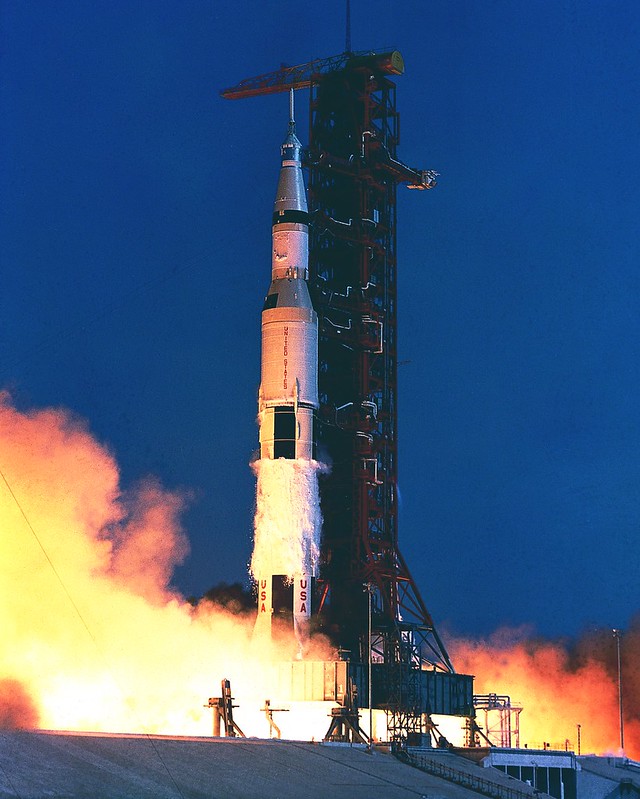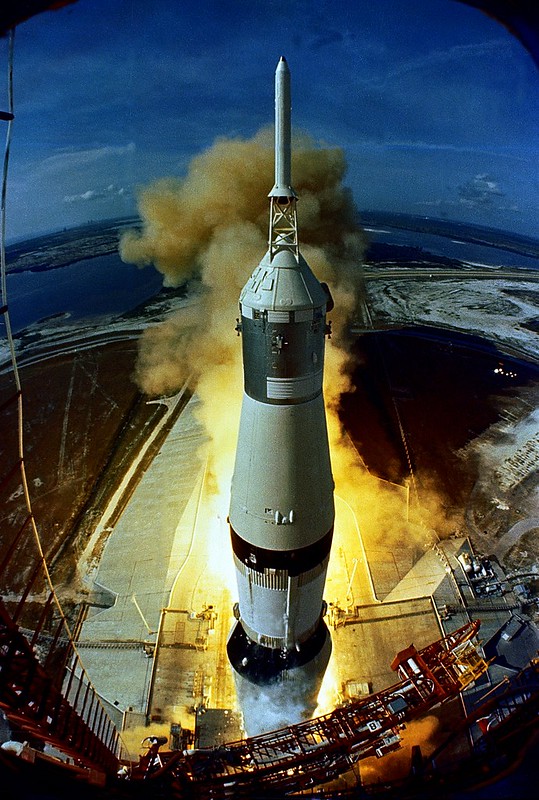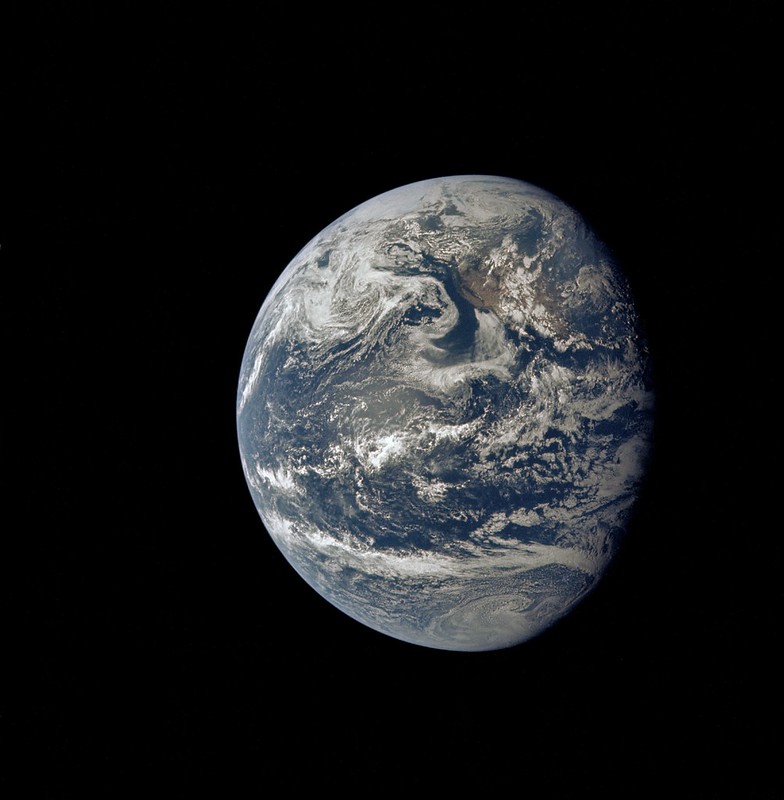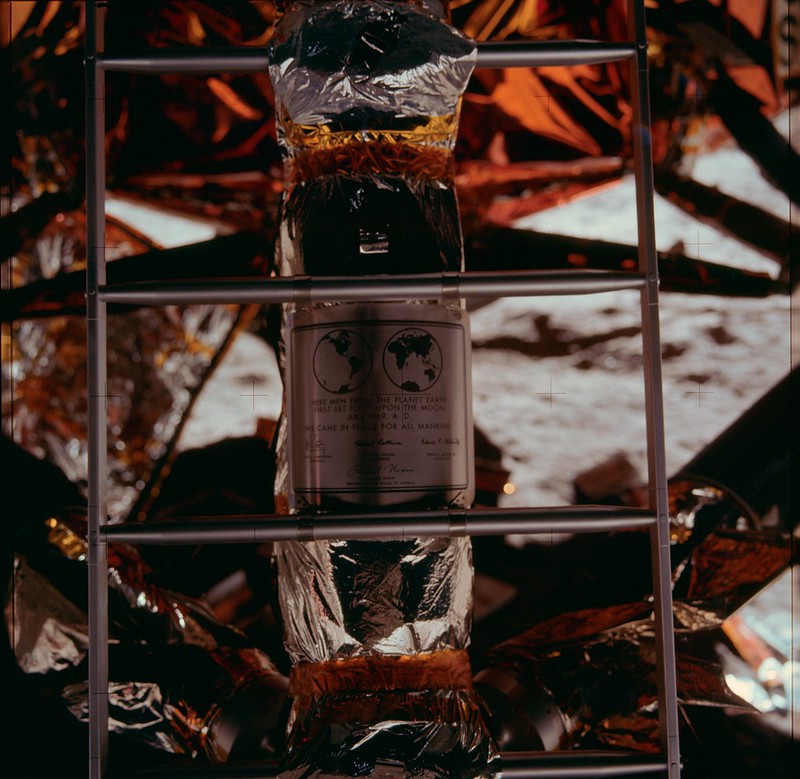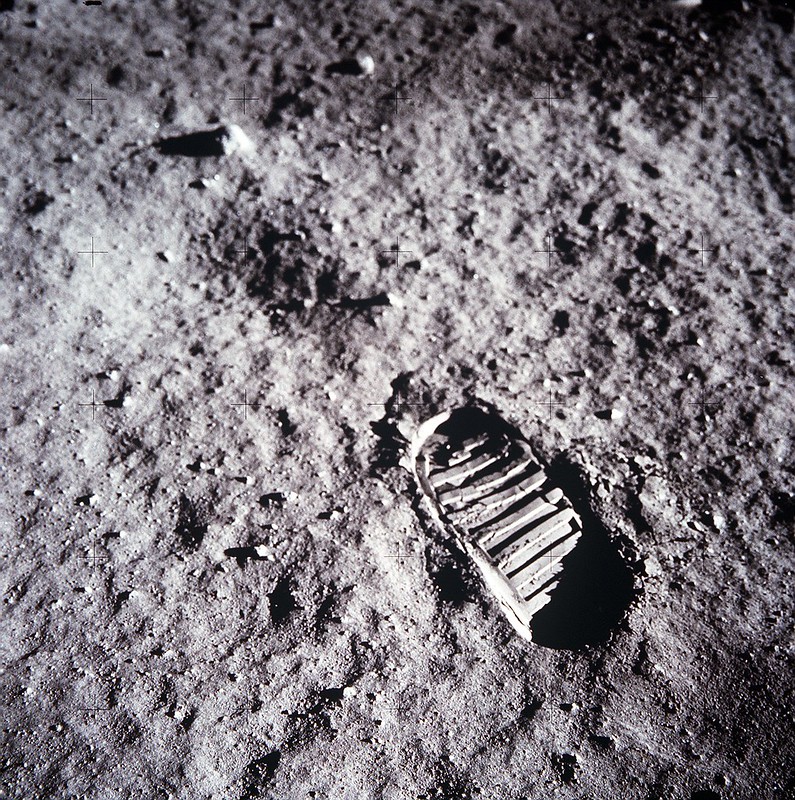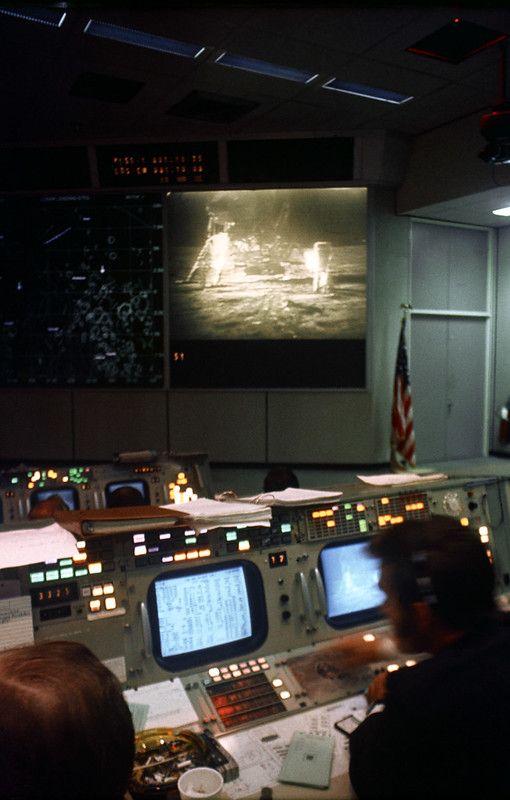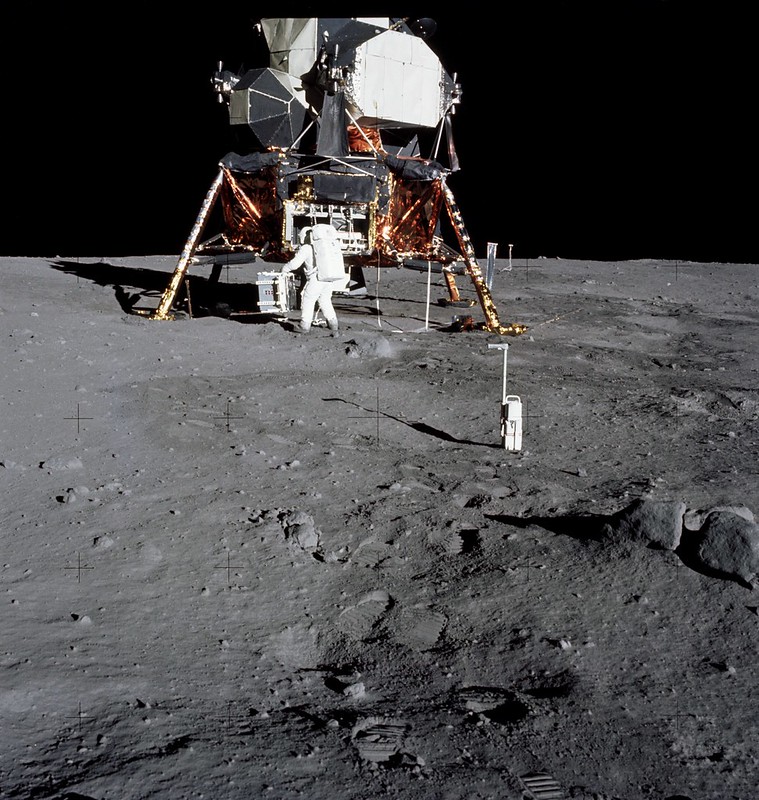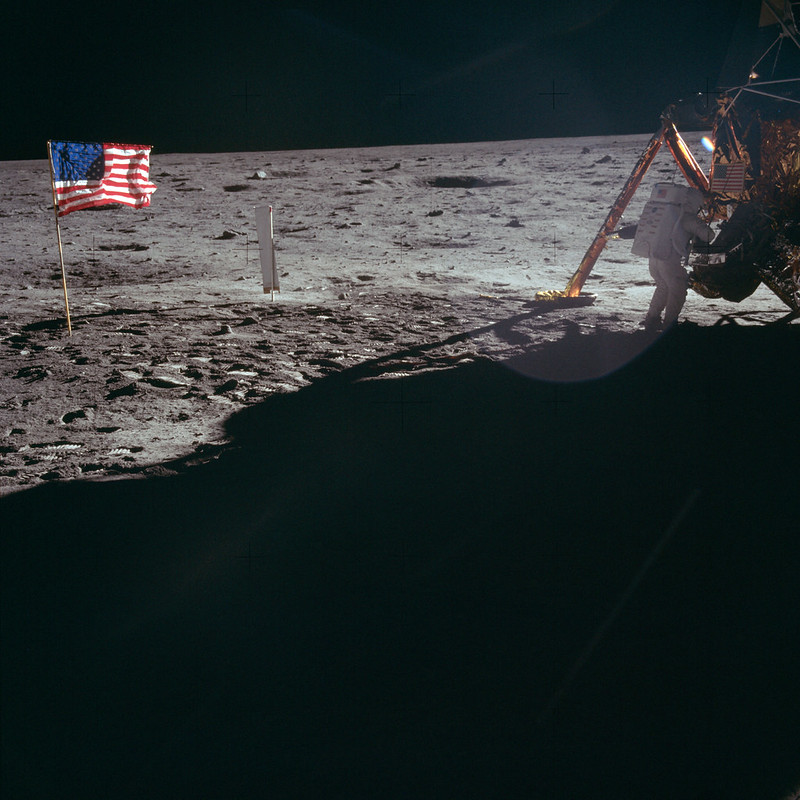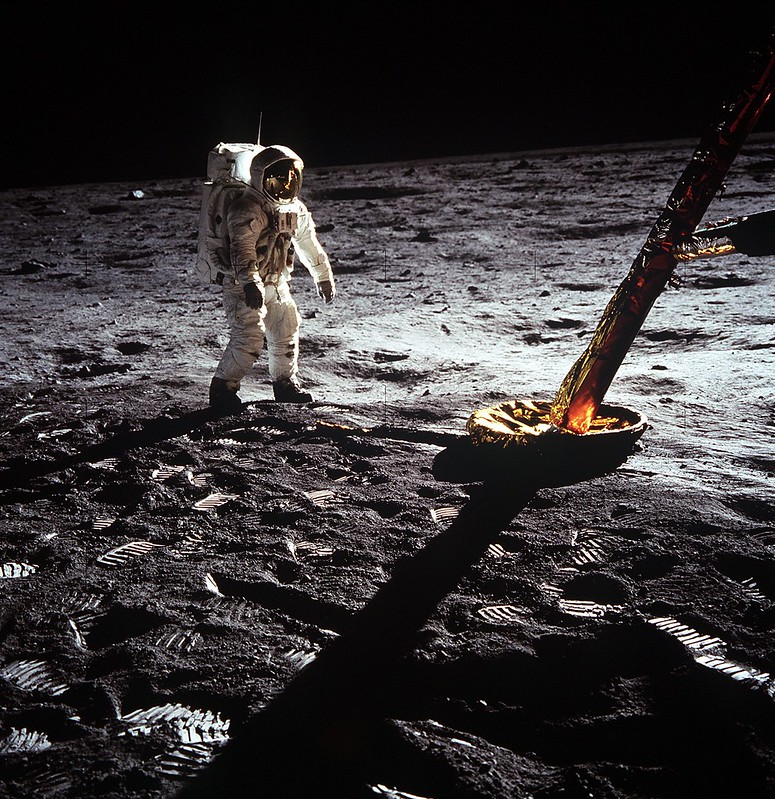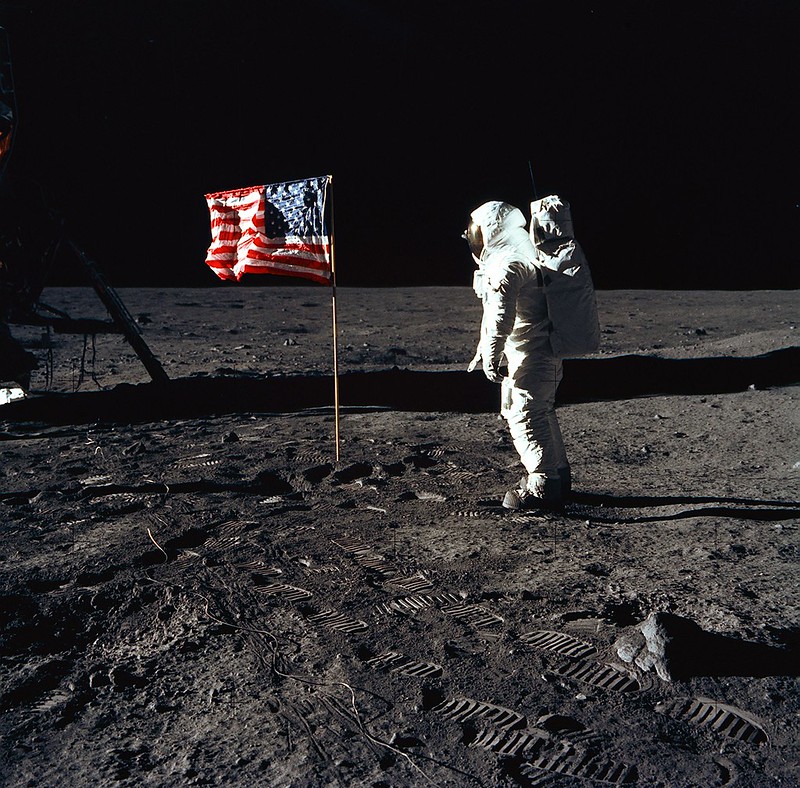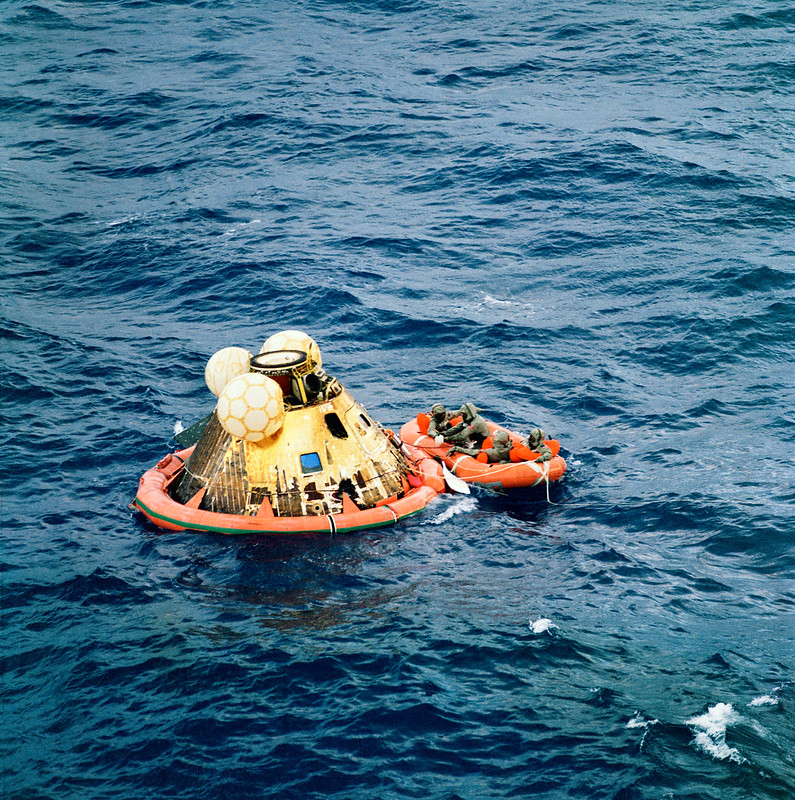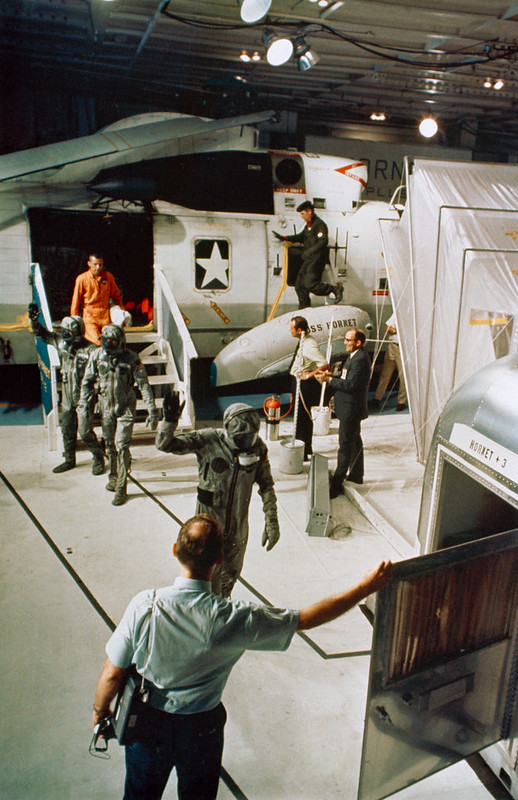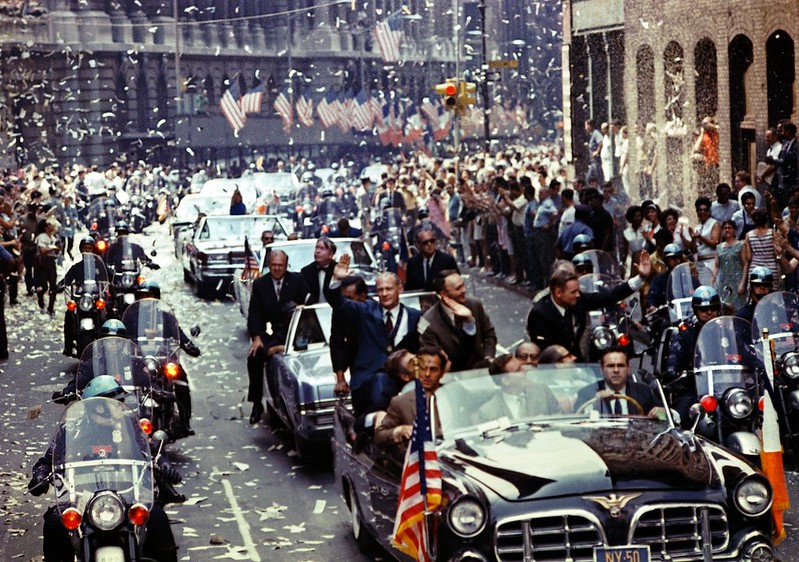Apollo 11 Fact Sheet
By Cliff Lethbridge

Apollo 11 (NASA Code: AS-506/CSM-107/LM-5)
Launch Date: July 16, 1969
Launch Time: 9:32:00 a.m. EDT
Launch Site: Launch Complex 39, Launch Pad 39A
Launch Vehicle: Apollo-Saturn V AS-506
Command Service Module: CSM-107
Command Module Nickname: Columbia
Lunar Module: LM-5
Lunar Module Nickname: Eagle
Crew:
Neil A. Armstrong, Commander
Michael Collins, Command Module Pilot
Edwin E. “Buzz” Aldrin, Jr., Lunar Module Pilot
Back-up Crew: Lovell (CDR), Anders (CMP), Haise (LMP)
Mission Duration: 8 Days, 3 Hours, 18 Minutes, 35 Seconds
Number of Lunar Orbits: 30
Recovery Date: July 24, 1969
Recovery: U.S.S. Hornet (Pacific Ocean)
Mission Summary:
Climaxing with the first manned landing on the Moon, Apollo 11 will likely remain the most famous and widely publicized space flight of all time.
All mission elements went according to plan, and only one of an anticipated four trajectory correction firings from the CSM engine was needed to keep the Apollo 11 spacecraft pointed toward its historic rendezvous with the Moon.
At about 55 hours into the flight, the Apollo 11 crew participated in a live television broadcast which lasted 96 minutes. The broadcast, carried on commercial television, whet the appetite of a huge audience anxiously awaiting the lunar landing which was by now just two days away.
Four days into the flight, the Command Service Module (CSM) engine fired twice to place the Apollo 11 spacecraft in a low-lunar orbit. Armstrong and Aldrin transferred to the Lunar Module (LM), which undocked from the CSM and dropped toward the lunar surface after a set of visual inspections and checks.
The descent took a nailbiting 12.5 minutes and was not without high drama which heightened the tension surrounding a mission already supercharged with excitement.
At a distance of about 6,000 feet from the Moon, an alarm light came on in the LM. Mission controllers said a computer overload had occurred which would not hinder the landing.
At about 3,000 feet above the lunar surface, a second alarm light came on, followed by four more in the next four minutes. All alarms were waived by mission managers.
However, the astronauts aboard Eagle were distracted and failed to notice until 2,000 feet from touchdown that the LM automatic landing system had selected a landing site that was too rocky.
At just 300 feet above the lunar surface, Armstrong took manual control of the LM and piloted the spacecraft at about 55 m.p.h. to select a suitable landing site.
A warning that less than 5% of descent fuel remained was indicated, giving Armstrong 94 seconds to land the spacecraft prior to an abort and return to the CSM. As the LM approached a suitable landing site, lunar dust was kicked up, reducing Armstrong’s visibility to a few feet.
At 33 feet above the lunar surface, the LM lurched dangerously, but Armstrong continued to gingerly guide the spacecraft toward a touchdown which was becoming increasingly hazardous.
Nevertheless, Eagle landed in the Sea of Tranquility at 4:17:43 p.m. EDT on July 20, 1969. Just 20 seconds of descent fuel remained for the landing, which occurred about four miles from the original target.
The LM astronauts donned spacesuits and were prepared to step out onto the Moon about 6.5 hours after lunar touchdown.
Armstrong placed a television camera onto the LM ladder, then set foot on the Moon at 10:55:15 p.m. EDT on July 20, 1969. The event was viewed live on television by an estimated 500 million people.
Armstrong almost immediately scooped up some lunar soil and placed it in a Teflon bag attached to his spacesuit.
Aldrin followed about one hour thereafter. The two men set up an American flag and deployed a number of scientific experiments including a seismometer, laser reflector and solar wind detector. The experiments were deployed in what was called the Early Apollo Scientific Experiment Package (EASEP).
The astronauts also gathered about 50 pounds of lunar rock and soil samples, and had a chance to speak live with President Richard M. Nixon. The total time of the first human lunar excursion was 2 hours, 32 minutes. Just one lunar excursion was allotted to this mission.
The LM lifted off after a lunar stay of 21 hours, 36 minutes and re-docked with the CSM for a return to Earth. The return flight and splashdown were flawless.
For the first time, U.S. astronauts were quarantined after their return to Earth. A mobile quarantine facility was used for the first time, as was the Lunar Receiving Laboratory at the Johnson Space Center in Houston, where the Apollo 11 crew remained isolated for about three weeks.
SELECTED NASA PHOTOS FROM APOLLO 11







